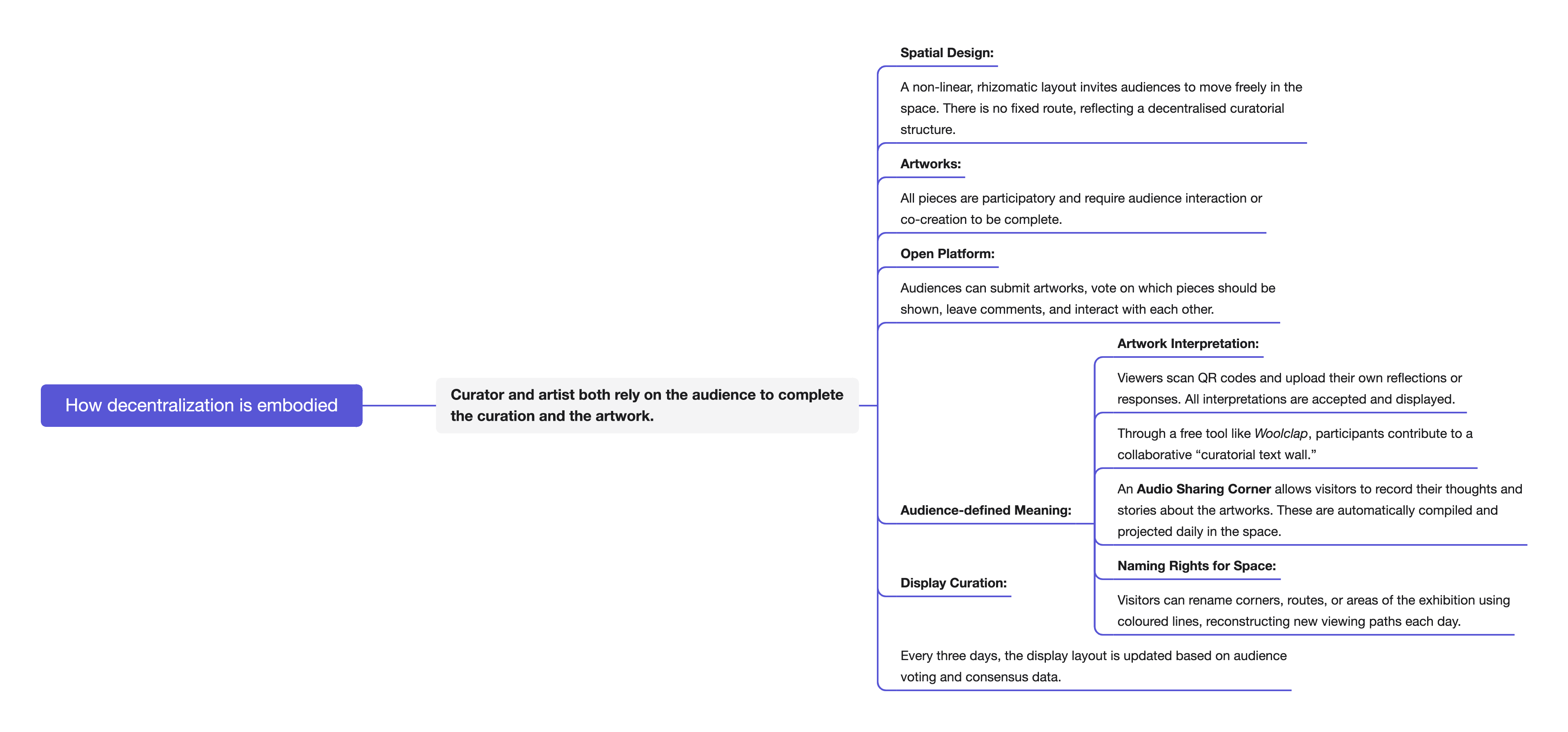W4 (Curatorial Ethics), W9 (Methods), W10 (Publics)
I started with a question:
Whose voices do we trust enough to let them shape the exhibition?
Consent, Not Contribution
In participatory curation, asking for input isn’t enough. We need to ask: how is that input used, attributed, stored, reshaped?
Visitors to Fluid Curating can share interpretations through the Woolclap platform, leave voice notes at the sound wall, or write directly onto the co-authored curatorial wall. But before any of these are made public—whether projected, printed, or posted—I offer clear options for anonymity, attribution, and withdrawal.
No voice enters the archive without its owner’s choice.
This principle draws on Gevers’ idea of “curating as context” (2013), where creating interpretive space includes creating consent space. It’s not about gathering stories for effect—it’s about constructing frameworks where stories can live with dignity and on their own terms.
Inclusion Isn’t Atmosphere—It’s Infrastructure
Too often, exhibitions proclaim inclusivity as a tone.
I wanted mine to reflect it in the structure.
Following the lessons of Fletcher and Pierce’s Paraeducation Department (2010), I’ve looked at Fluid Curating as a platform where knowledge doesn’t flow in one direction. Working with students in TESOL, Inclusive Design, and Art Education, we’ve translated key exhibition content into multiple languages, created tactile signage, and provided verbal cue cards for blind or low-vision participants.
We also installed “quiet time”—pathways with minimal audio and movement, to allow neurodivergent visitors more time and space. Participation isn’t timed by the exhibition’s speed; it unfolds at the visitor’s own rhythm. As DisplayCult (2016) argue, affective experience is a form of labour. So this exhibition makes space for rest, silence, and slower modes of meaning-making.
![Home [www.victoriesnautism.com]](https://th.bing.com/th/id/R.b8f4afd386a99f83da117cdc1585f9ed?rik=NFwJMjNv3U0pLw&riu=http%3a%2f%2fwww.victoriesnautism.com%2fuploads%2f4%2f0%2f4%2f0%2f4040527%2f9118470_orig.png&ehk=vzG%2bDm1Bh231I9%2flBWhKI2EQ77dMYvfxNX%2bAa7s1IoY%3d&risl=&pid=ImgRaw&r=0)
( Example of multilingual verbal cue cards)
Publics Are Not Pre-Defined
Simon Sheikh (2010) reminds us that exhibitions don’t merely reflect publics—they produce them. This idea reframed how I saw my responsibility.
Rather than trying to imagine one singular “ideal audience,” I thought about what it means to hold space for unplanned publics: the passerby, the hesitant, the first-timer, the child, the migrant visitor.
Each contribution is a potential act of authorship—not simply commentary. And that shifts the ethics. If we honour those inputs, we also honour the role of the curator as listener, not just organiser. That’s why I built Woolclap around anonymous entries and multilingual response portals. These aren’t decoration. They are architecture.
Why This Matters
Martinon (2013) describes the role of curators as those who refuse to totalise meaning. That’s the ethics I’m drawn to—not just inclusion as presence, but inclusion as epistemic permission.
So in Fluid Curating, every ethical decision—whether it’s signage design or story ownership—emerges from one belief:
No voice should have to ask for permission to be part of the conversation.
Citations
-
Beech, Dave. 2010. “Weberian Lessons: Art, Pedagogy and Managerialism.” In Curating and the Educational Turn, edited by Paul O’Neill and Mick Wilson, 47–60. London: Open Editions / Amsterdam: De Appel.
-
DisplayCult (Jim Drobnick and Jennifer Fisher). 2016. “Curating the City: Collectioneering and the Affects of Display.” In The Artist as Curator, edited by Celina Jeffery, 151–68. Bristol: Intellect.
-
Fletcher, Annie, and Sarah Pierce. 2010. “Introduction to The Paraeducation Department.” In Curating and the Educational Turn, edited by Paul O’Neill and Mick Wilson, 198–99. London: Open Editions / Amsterdam: De Appel.
-
Gevers, Ine. 2013. “Curating: The Art of Creating Contexts.” In The Curatorial: A Philosophy of Curating, edited by Jean-Paul Martinon, 217–26. London: Bloomsbury Academic.
-
Jeffery, Celina. 2016. “Introduction: The Artist as Curator.” In The Artist as Curator, edited by Celina Jeffery, 1–20. Bristol: Intellect.
-
Martinon, Jean-Paul. 2013. “Becoming-Curator.” In The Curatorial: A Philosophy of Curating, edited by Jean-Paul Martinon, 69–81. London: Bloomsbury Academic.
-
O’Neill, Paul, and Mick Wilson, eds. 2015. Curating and the Educational Turn. London: Black Dog Publishing.
-
Sheikh, Simon. 2010. “Letter to Jane (Investigation of a Function).” In Curating and the Educational Turn, edited by Paul O’Neill and Mick Wilson, 70–71. London: Open Editions / Amsterdam: De Appel.
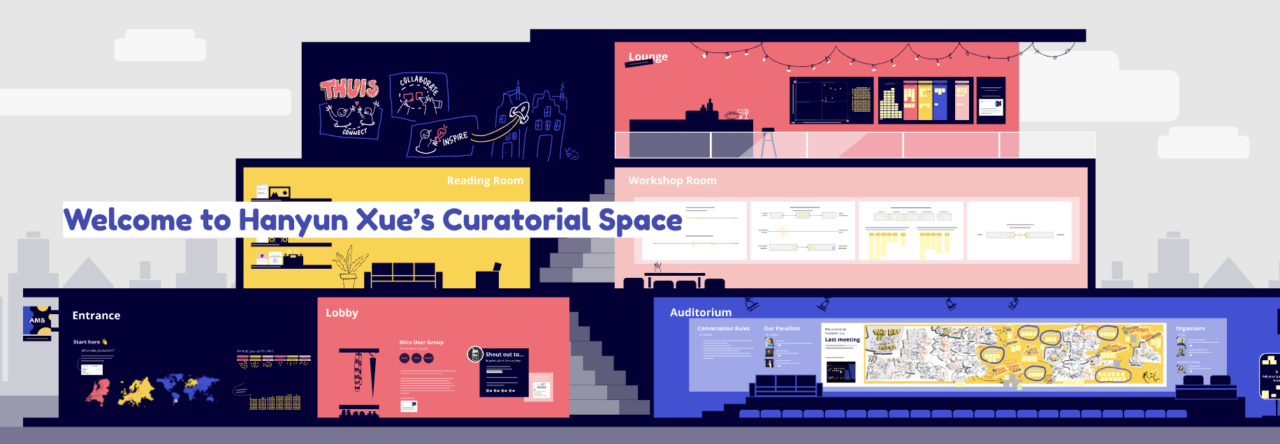
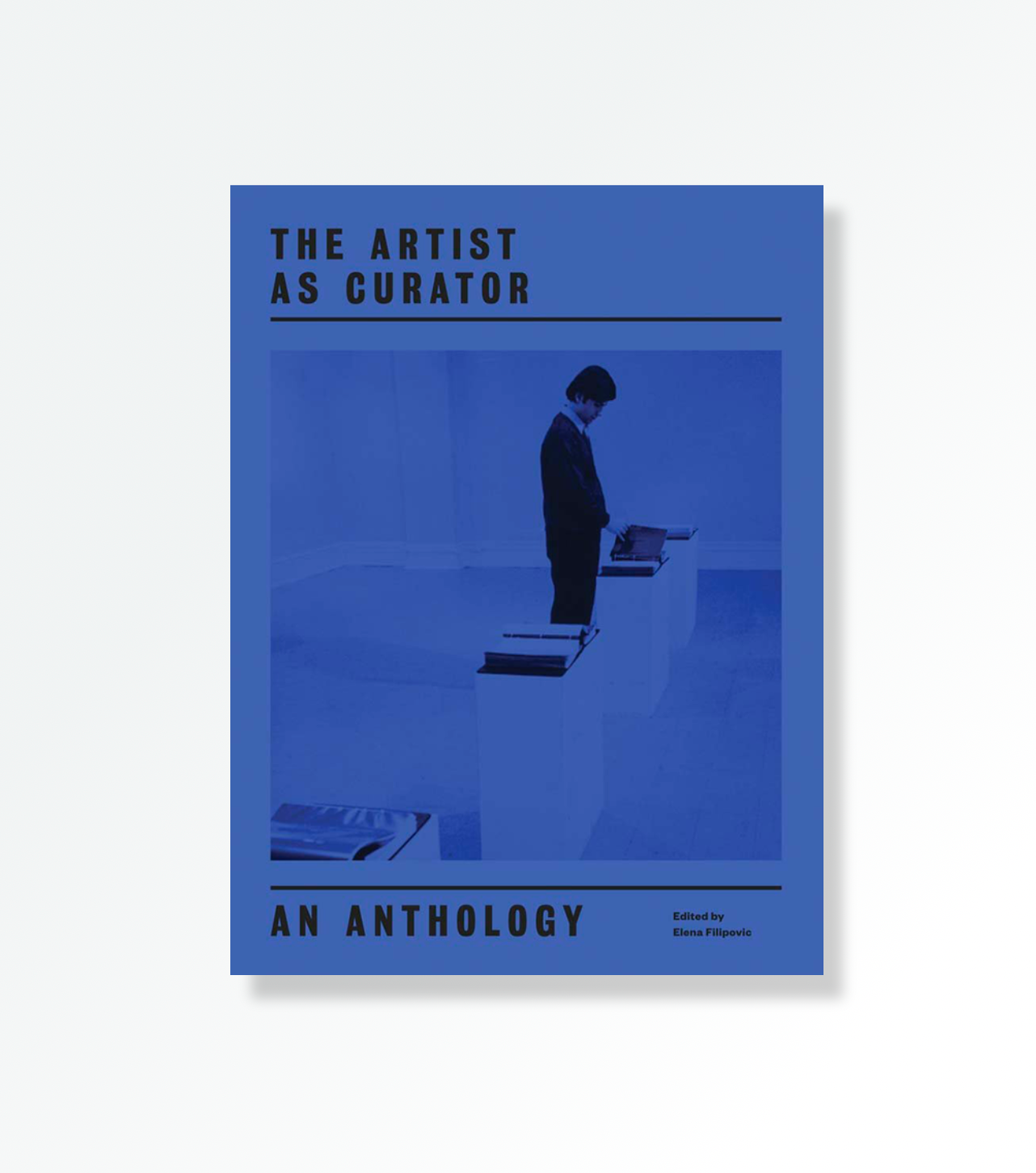
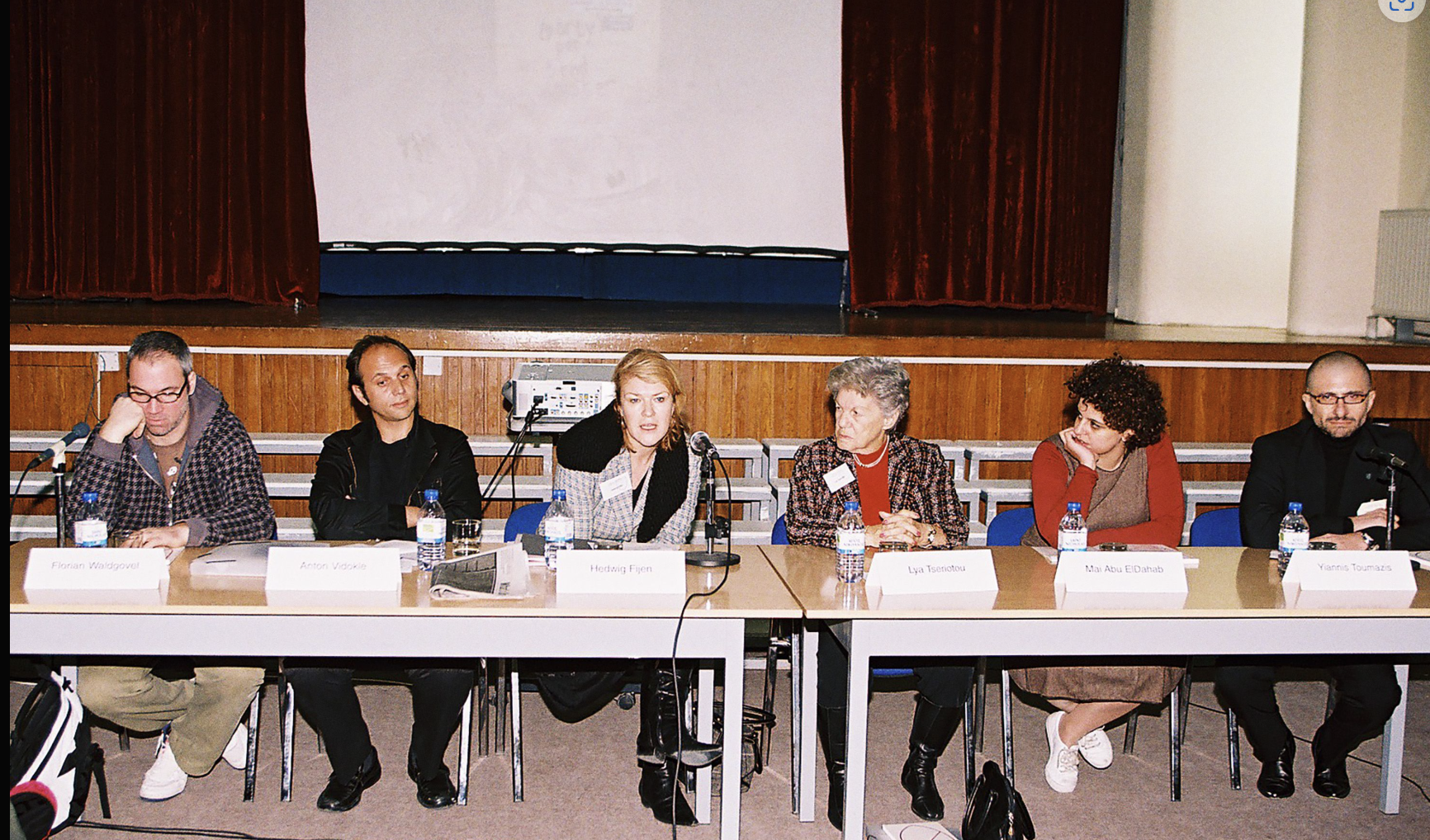
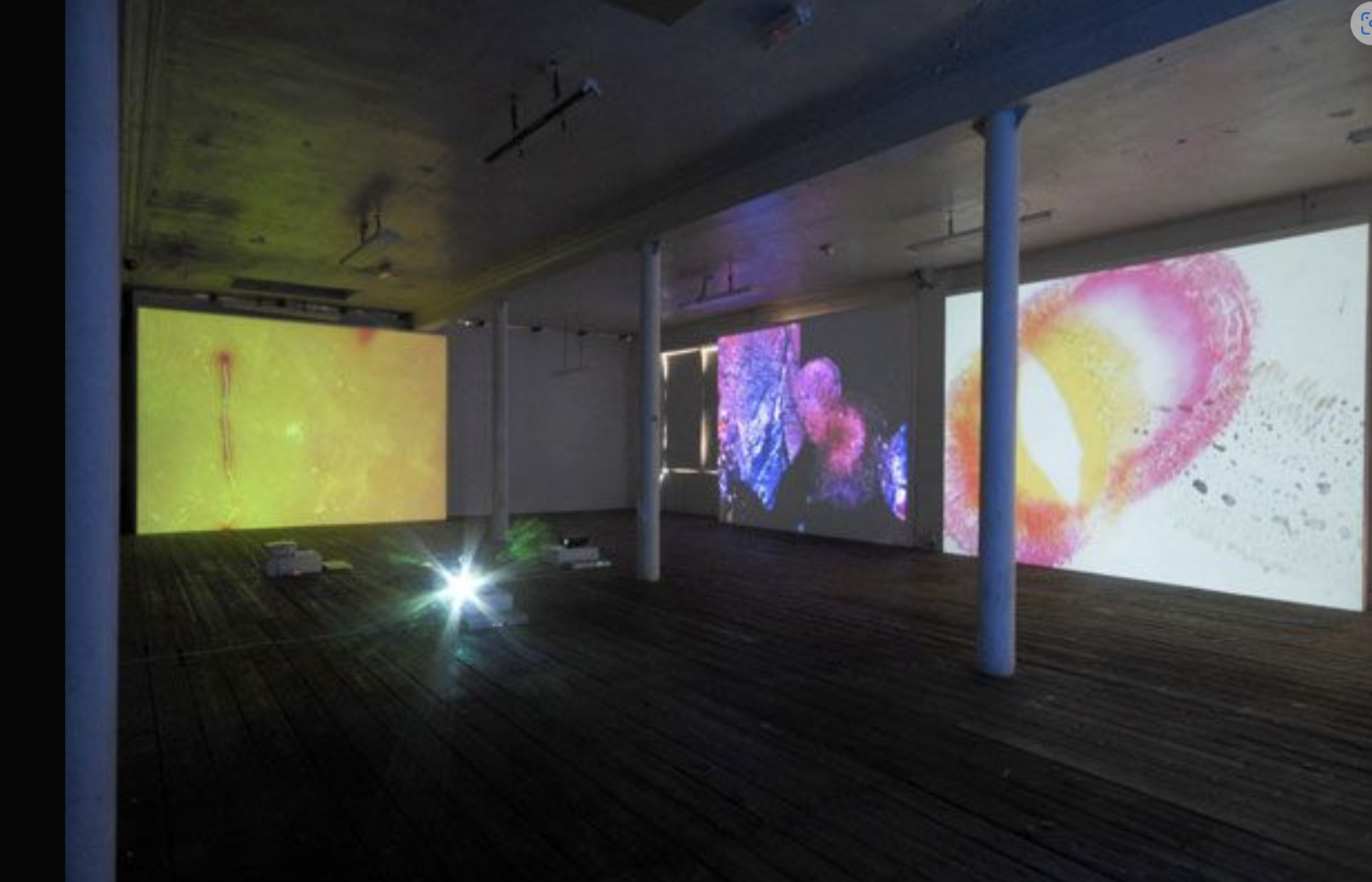 (Gallery: Transmission Gallery, Glasgow)
(Gallery: Transmission Gallery, Glasgow)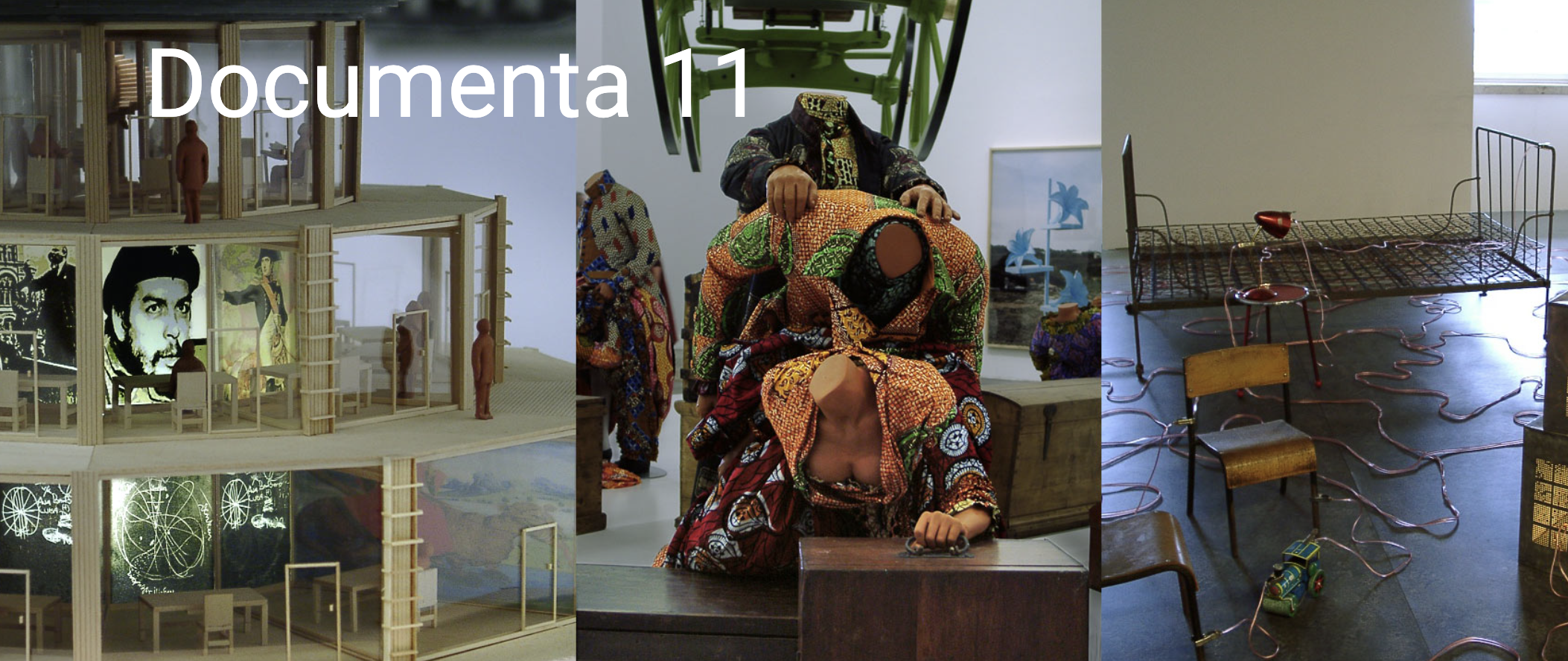
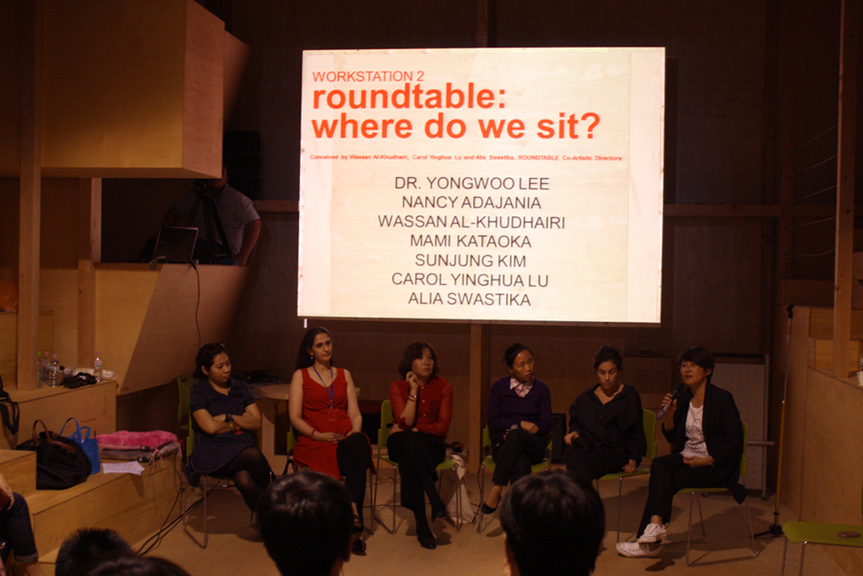
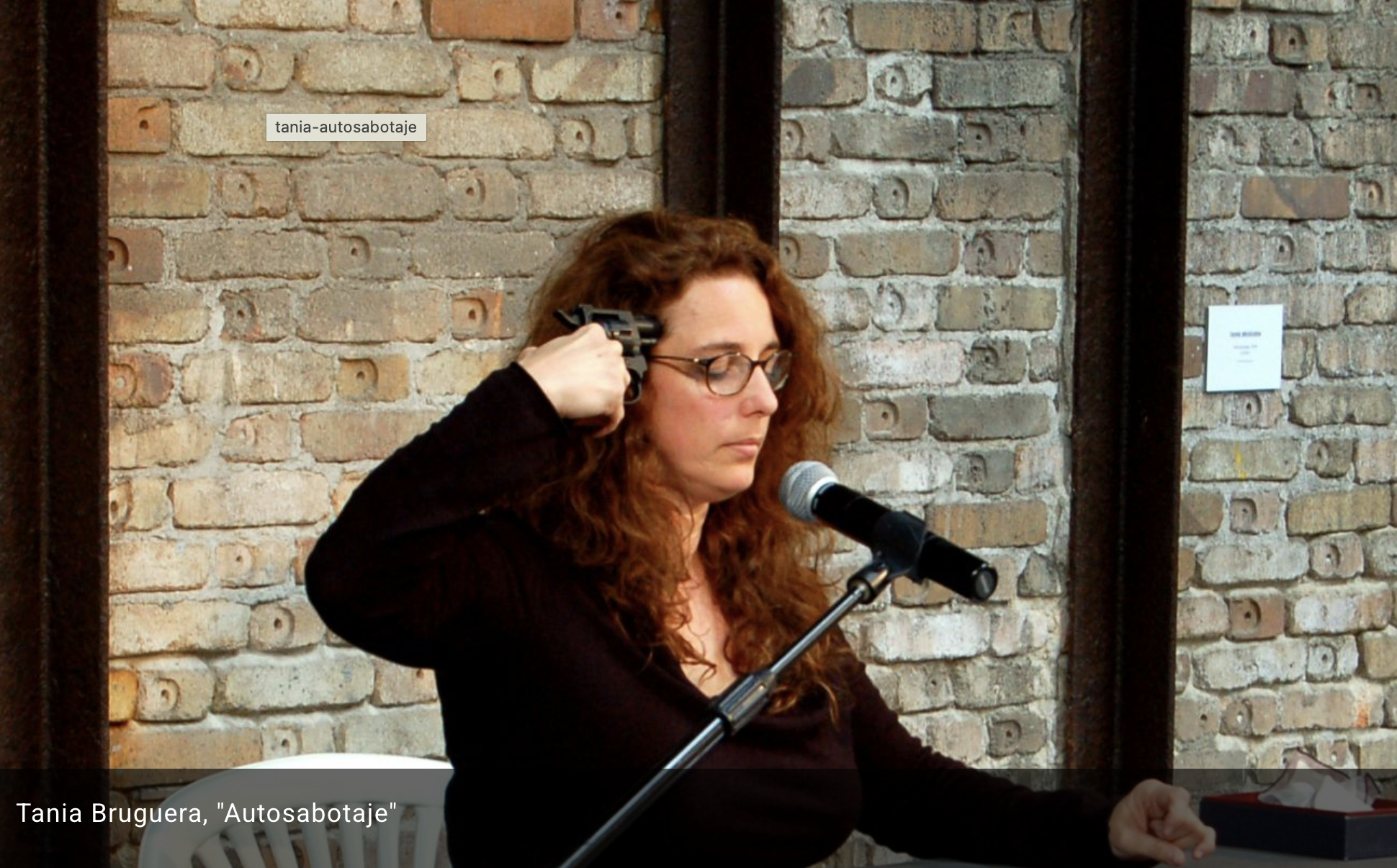
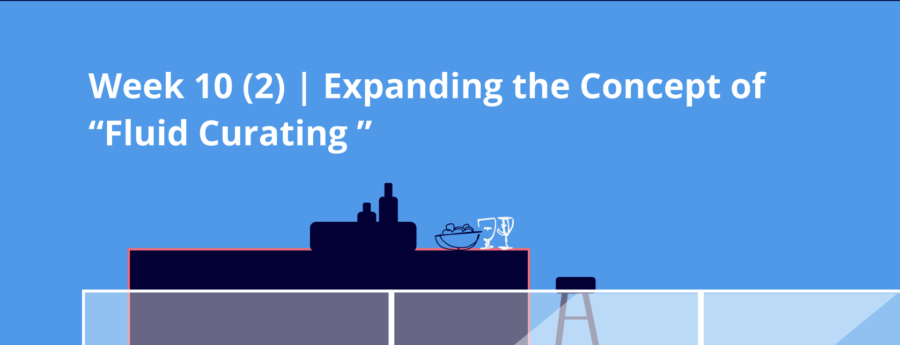
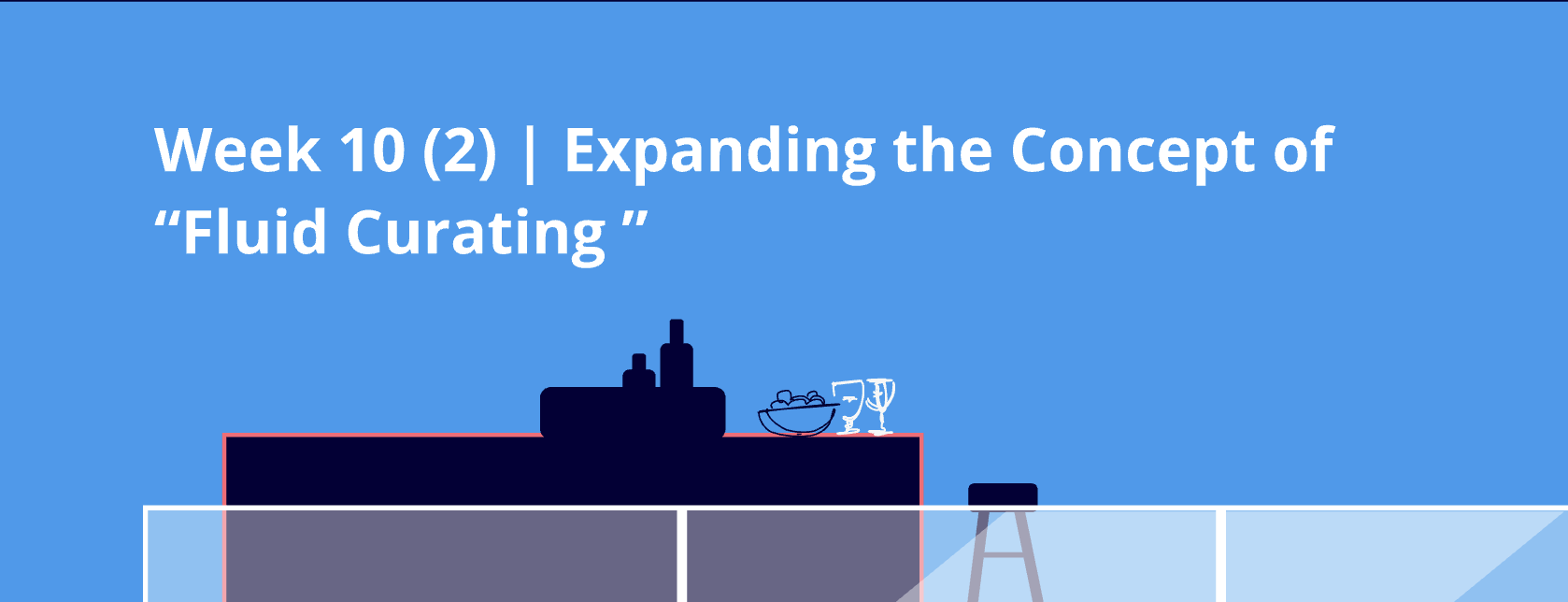 🌊 My Exhibition Is Not a “Finished Product,” But a Flowing Relationship
🌊 My Exhibition Is Not a “Finished Product,” But a Flowing Relationship